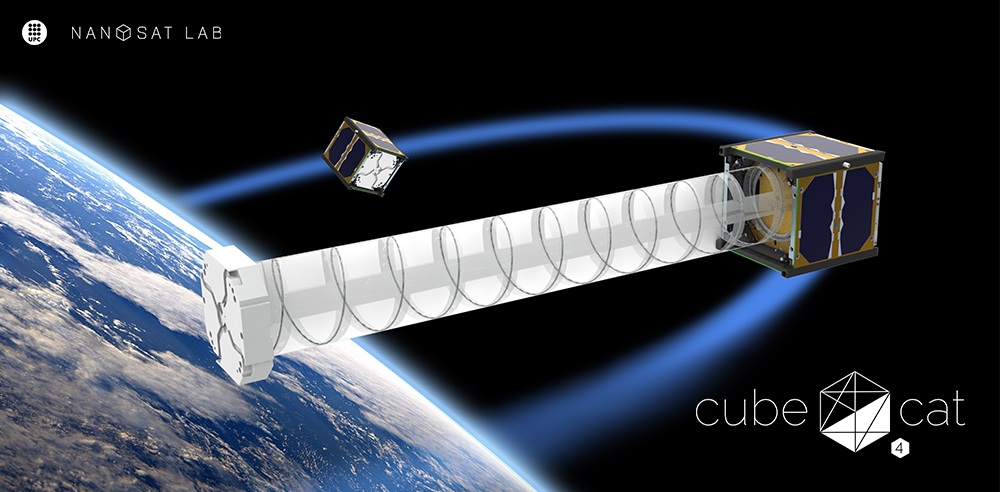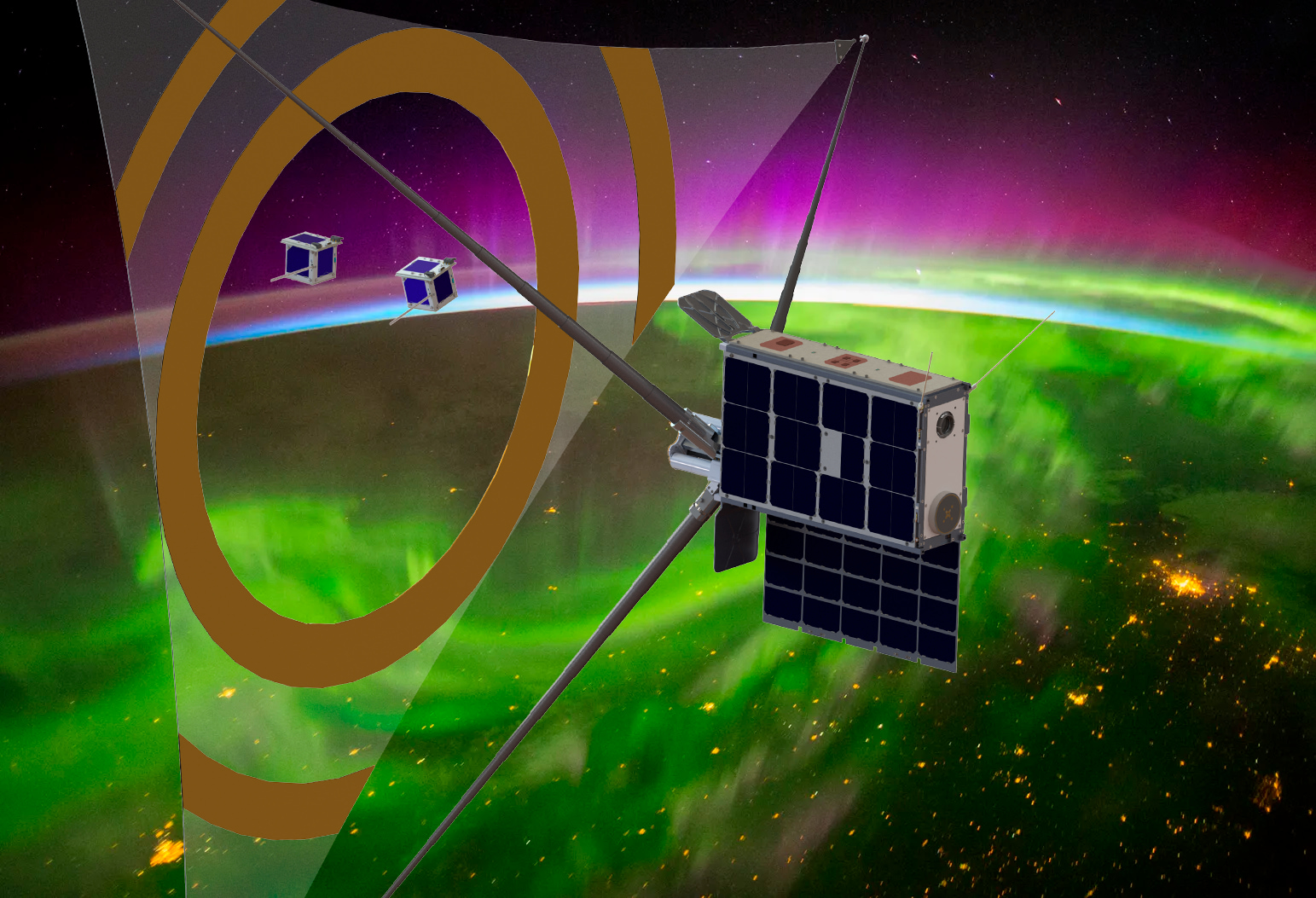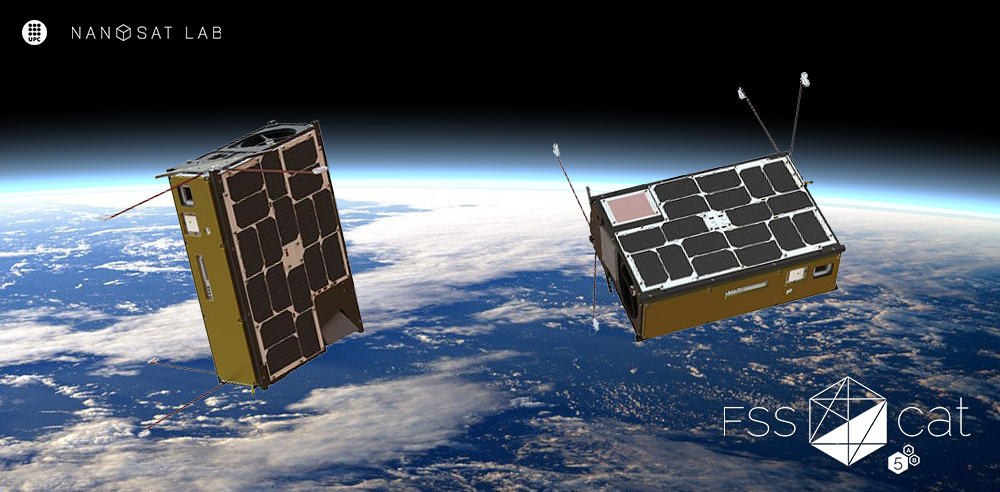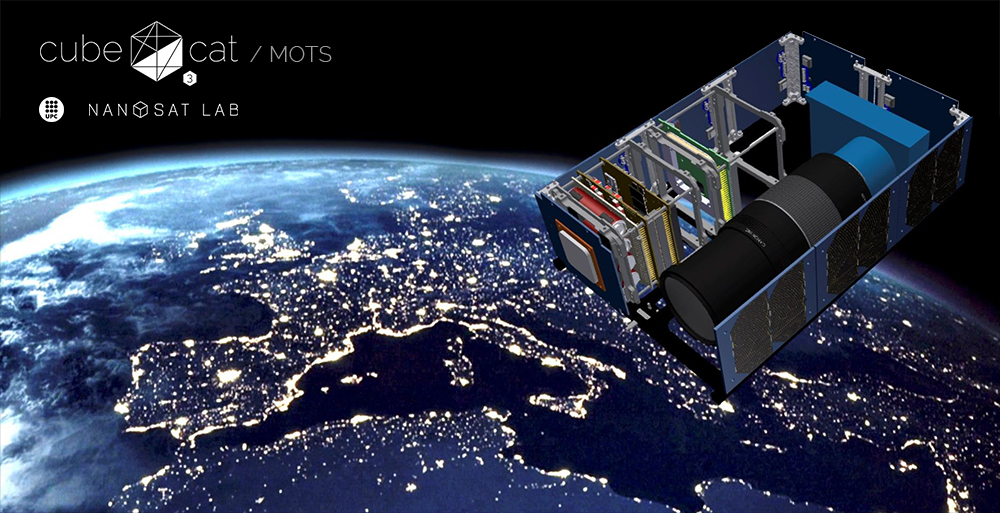· Guillem Gracia i Sola · Mission · 3 min read
RITA
A New Space Mission from UPC NanoSat Lab for Earth Observation - RITA/3Cat-6
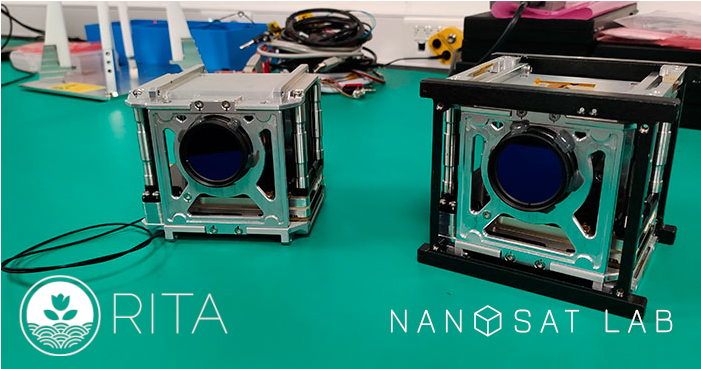
The RITA/³Cat-6 payload, developed by doctoral students at the UPC NanoSat Lab, is now in orbit, integrated within the Arab nanosatellite ALainSat-1. The UPC payload is equipped with instruments to collect data on sea salinity, soil moisture, and vegetation status.
Mission Details
According to doctoral student Adrián Pérez-Portero, the mission captain, “RITA/3Cat-6 is not a satellite by itself but an academic Earth observation payload that will travel aboard an external nanosatellite, ALainSat-1, developed by the National Space Science and Technology Center (NSSTC) of the United Arab Emirates University (UAEU).” The nanosatellite was launched into space aboard the SpaceX Falcon 9/Transporter 12 rocket from the Vandenberg base in California, USA.
On January 14, the ALainSat-1 nanosatellite was successfully deployed into orbit, carrying the RITA/³Cat-6 payload, which was designed at the NanoSat Lab by doctoral students in the Signal Theory and Communications program and alumni of the Barcelona School of Telecommunications Engineering (ETSETB) at the Polytechnic University of Catalonia - BarcelonaTech (UPC).
Scientific Goals
Now in orbit, the RITA/³Cat-6 mission aims to:
- Collect sea salinity and soil moisture data using microwave radiometry.
- Assess vegetation status with a hyperspectral camera.
- Demonstrate LoRa technology, enabling long-range wireless communication applicable to the Internet of Things.
- Test a radio frequency interference detector.
- Utilize an S-band communication system for scientific data transmission.
These objectives are being implemented with the support of undergraduate, master’s, and doctoral students, guided by faculty members.
Background and Development
This mission won second place in the 2019 IEEE GRSS Student Grand Challenge, a competition by the Geoscience and Remote Sensing Society (GRSS) that engages students and young professionals in solving complex engineering problems. Five years later, in March 2024, Adrián Pérez-Portero, Amadeu Gonga i Siles, and Guillem Gràcia i Solà, all engineers trained at UPC’s ETSETB, traveled to NSSTC in Al-Ain to complete the integration of the RITA/3Cat-6 payload into the ALainSat-1 nanosatellite. Now, in January 2025, the project has reached space.
The data collected by RITA/³Cat-6 will be transmitted by ALainSat-1 and received by young researchers at UPC at the Montsec Satellite Tracking Station in Lleida, among other stations. This infrastructure was developed by the UPC NanoSat Lab and is managed in collaboration with the Institute of Space Studies of Catalonia (IEEC).
Part of the 3Cat Satellite Series
According to Pérez-Portero, “This mission is considered the sixth within the UPC NanoSat Lab’s 3Cat small satellite series, which has been entirely developed by students and faculty in this laboratory.” Directed by Professor Adriano Camps, the NanoSat Lab is located on UPC’s Diagonal Nord Campus and is associated with the ETSETB, the CommSensLab-UPC Specific Research Center, and the Department of Signal Theory and Communications at UPC.
